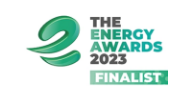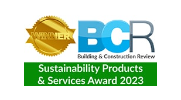The Government’s drive toward Net Zero and its “green industrial revolution”, last November gave a clear message that publicly funded organisations would be expected to be leading the charge when it came to demonstrating sustainable developments. The Department for Education (DfE) has already increased focus on property-related efficiency, and the expectation is this will only increase if schools sustainability is to be delivered across their estates.
But understanding how a school property’s assets contribute to overall performance, and how individual assets perform against technical criteria for sustainability has never been more challenging for estate managers.
The complex technical issues that surround commercial-grade domestic hot water (DHW) and heating applications within schools demand strategic, real-world understanding. Not only are there physical limitations when it comes to technologies on offer, but there are also considerable variances in capital expense and ongoing operational costs that without doubt contribute considerably to the annual costs of running a school. That is a critical issue for authorities and academies that need to balance the demands of change within often restrictive budgets.
The challenge of meeting schools sustainability goals
For education sites that typically exhibit a large DHW load, there remains a strong argument for employing gas-fired water heating. And, just as electricity is becoming greener, so too can the gaseous fuels when blended with hydrogen and other synthetic fuels. With publicly funded organisations increasingly being mandated to demonstrate clear and real investment in sustainable and low carbon technology schools face a complex, real-world and political challenge.
Far too often, school hot water systems suffer from poor application design where a lack of understanding of different types of hot water system leaves systems oversized to prevent perceived hot water problems. Inefficient and less environmentally friendly, such systems are more costly to build and operate for their entire lifespan. This can be further exacerbated by the complexities of introducing Air Source Heat Pumps (ASHP) – the current clear preference of the Government – and Solar Thermal systems.
With ASHPs offering greater efficiencies in low-temperature systems, the high-temperature demands of domestic hot water (DHW) for school applications can be a challenge. It is recommended to calculate emissions at a working water temperature from the ASHP of 55°C, this is then hot enough to provide realistic levels of preheat for a commercial DHW system. Schools’ applications using heat pumps are going to be complex and, when compared to gas-fired alternatives, are going to have higher up-front and operational costs. Offsetting these additional investments though are new efficiencies and sustainability that reduce CO₂ emissions.
Now is also a good time to reconsider the integration of a solar thermal system as part of the premises. Not only a proven and extremely reliable technology, for the past 15 years solar thermal has offered a clear path to reducing CO₂ emissions for sites that rely on large amounts of hot water.
Solar Thermal provides an effective way to offset the new financial burden that comes from moving from gas to currently far more expensive electricity. A ten-year return on investment becomes very achievable, and, with zero emissions, the undisputed carbon and cost savings make this technology increasingly more viable.
Solar has always been used as a preheat with the coldest water possible to maximise the efficiency and output: this gives maximum free heat with no carbon emissions. But there is also a good case now for using solar thermal with heat pumps and electric if set up as a mid-heating system which can lower both carbon and cost.
A Simple Choice
For the time being, schools looking to decarbonise their systems have a simple choice, use either solar thermal or ASHP to preheat water, and gas or direct electric as after heating. By using preheat you can offset up to 75% of a systems energy demands and thereby actively reduce carbon emissions. All these technologies can be made to work together, but for new builds, the expectation will be to fit a heat pump and direct electric system. For pre-existing systems that use gas then the additional use of solar thermal is recommended. This also has the advantage of retaining gas-based system infrastructure, so the building has the option, at a later date, to evolve its use to green gas alternatives. So if you already use gas on-site do not feel pressured into removing it quite yet.
None of the above is a single, all-encompassing answer for schools seeking to achieve Net Zero, but when used together they can provide reliable, business-critical hot water and heating systems that deliver value for capital investment, exhibit lower ownership costs over their lifetime and will help to meet current sustainability targets. They also provide a clear path for the integration of new technologies, such as high-temperature heat pumps and hydrogen ready appliances which will ultimately help to deliver Net Zero by 2050.
At Adveco, our dedicated application design team provide accurate, bespoke sizing, for both new build and refurbishment projects. Once correctly sized, we can recommend, supply, commission, and service the optimal appliances whether they be gas, electric or a mixed hybrid approach that incorporates solar thermal, heat pumps and heat recovery systems. This is the best way of ensuring schools hot water demands are met in the most cost-effective and sustainable manner.
Read more about how Adveco can help achieve schools sustainability
 Speak to Adveco about finding the answer to schools sustainability.
Speak to Adveco about finding the answer to schools sustainability.
Call us on 01252 551 540 or see our alternative contact details.













